Lost in White River Junction: Network of Walking Paths Connected Terraces
| Published: 07-19-2017 2:58 PM |
A
The path snakes down to the dead end of Fairview Terrace. Until last year, when construction on an assisted living facility on Gates Street broke ground, the trail turned right and picked up where the pavement tapered off. It led right into the heart of the village, behind what’s now the Barrette Center for the Arts, exiting by the Veterans of Foreign Wars post on South Main Street.
Now, the trail from Fairview Terrace is closed. It stops abruptly, at a sharp drop-off just before the construction site. Both ends of the Fairview Terrace trail have been blocked off with a barrier made of wooden planks and orange safety netting.
Brooke Ciardelli, one of the developers of the assisted living facility and the founder of Northern Stage, said that because of the historic value of the path, it would be restored in its entirety once the building project wraps up.
“It’s closed now for safety, but because of the public desire to maintain the path for public benefit, it’ll be reopened in its original state once we’re finished,” she said.
When the path reopens it will continue an informal use that historians say dates to the 19th century, when residents in new homes on the hillsides walked down to the growing railroad village below. Over the past century, the advent of the automobile has obscured the trails somewhat, with some of them falling into disuse and others, such as the route from Hillcrest Terrace down to Northern Stage, remaining open, if not heavily trodden.
This may help to explain why the trails have become somewhat obscure. The Hartford Historical Society suggested contacting the Parks & Recreation Department for information about the trails. The Parks & Recreation Department referred to the Historical Society.
Ken Parker, who has spent all of his 70 years in Hartford, remembers playing on the paths as a kid, especially in winter — the steep, curving trails down the terraces and into town provided the perfect opportunity for death-defying sledding for him and his friends in the neighborhood.
Article continues after...
Yesterday's Most Read Articles
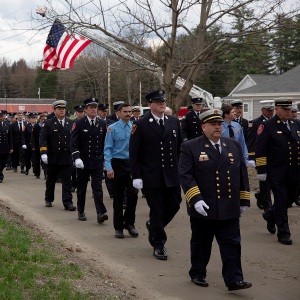 Crowd turns out to honor late Ascutney Fire Chief Darrin Spaulding
Crowd turns out to honor late Ascutney Fire Chief Darrin Spaulding
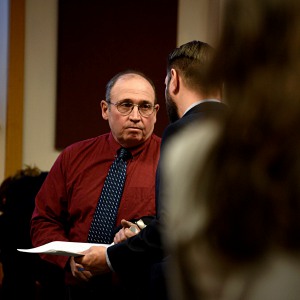 Former principal of South Royalton School released from prison
Former principal of South Royalton School released from prison
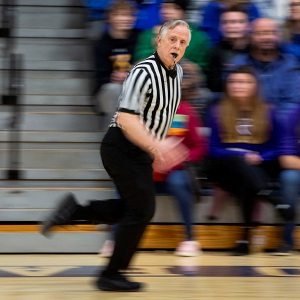 Pick a sport and Pete DePalo’s has probably officiated it over the past 40-plus years
Pick a sport and Pete DePalo’s has probably officiated it over the past 40-plus years
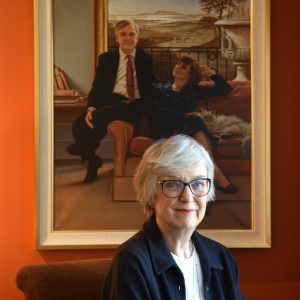 Upper Valley residents among advocates for NH aid-in-dying bill
Upper Valley residents among advocates for NH aid-in-dying bill
 NH man convicted of killing daughter, 5, ordered to be at sentencing after skipping trial
NH man convicted of killing daughter, 5, ordered to be at sentencing after skipping trial
“We’d take our Flexible Flyers and we’d haul them all the way up to the top, and we’d sled down the trail … right into Miller Auto,” he recalled. This was in the 1950s, when Miller Automobiles still owned the building that is now the Barrette Center for the Arts.
“There were a couple other informal paths, too,” he added, which people didn’t traverse as frequently as the ones with trailheads on Hillcrest and Fairview terraces. “There were some kids who did those, but it was a pretty slippery, treacherous way down. I never used them, as I had an aversion to falling off things.”
Allyn Ricker, who has lived in Hartford for more than 60 years, said he would use the trails from time to time.
“They’ve always just been there,” he said.
But of course, they haven’t. At some point, some human force wore clear, fairly wide footpaths between the terraces and the downtown. But who went to this trouble, and why?
Jay Barrett, the architect and historian based in White River Junction, thinks the paths probably originated after the rise of the railroad in the mid-to-late 19th century, when houses started cropping up along the terraces.
Prior to this development, though, the whole hillside was part of a great, long geological feature called an esker.
“When the glaciers melted about 13,000 years ago, the outwash from the glaciers deposited long lines of gravel, parallel to the Connecticut River,” Barrett said.
The esker ran from North Thetford down to Windsor, hence the abundance of gravel pits in the area. This proved useful during the late 1840s, when railroad workers — many of them Irish immigrants working for 25 cents an hour, 12 hours a day — needed as much gravel as they could get their hands on, so that they could raise the grade level of the railroad above the floodplain of the Connecticut River.
It wasn’t until the 1870s that the hillside started to heal, and vegetation started to grow and thrive once again.
“Before that, it was just a great, big, open scar of a bank,” Barrett said.
But by the 1890s, full-blown neighborhoods started springing up along the terraces, he said. He suspects that someone carved out the footpaths around this time, to make it easier to get into town.
“It’s only logical that they would do that,” he said, noting that businesses on Gates and Currier streets were starting to develop in earnest.
At some point, probably after the railroad industry gave way to the era of automobiles, people started to call the terrace trail “the carriage road.”
Barrett wants to dispel this rumor, as he finds it unlikely that the dicey terrain ever saw a horse and buggy.
“Given the steepness and narrowness of it, I would not want to ask a horse to haul me up there,” he said. “Things get romanticized over the years, especially when we’re looking back on previous times, so I can understand why someone started calling it that.”
The trail itself is quiet and lovely, and does seem to invite romantic notions.
It must have also seemed inviting to one W.H. Holden, a prominent Seventh Day Adventist from Bellows Falls, who in 1911 thought the terraces would be a good spot to hold a camp meeting for church members across northern New England. In the weeks leading up to the conference, he advertised the location heavily in Atlantic Union Gleaner, the official publication of the Seventh Day Adventist Church; the town of Hartford recently cited these issues of the Gleaner in a document nominating the Advent campground as a historic district. Pat Stark, the records specialist at the Hartford Town Assessor’s Office, shared a copy of this document with the Valley News.
Thanks to some very clear directions from Holden, who was the president of the Seventh Day Adventist Northern New England Conference at the time, it seems that the campsite was in the vicinity of Hillcrest Terrace, and that camp-goers accessed the site via footpath.
Holden had high hopes for the meeting: “I believe it will be the largest and best camp-meeting held in Vermont for many years,” the Seventh Day Adventist wrote in an Aug. 2 edition of the Gleaner.
Holden went on to describe, in great detail, how to walk from the White River Junction train station to the campsite, which was situated “on an elevated plateau just west of the village, and within a very few minutes’ walk from the station.”
Holden instructed camp-goers to “cross the track and go toward the stores that are plainly in sight, pass the First National Bank, go directly across South Main Street, keep straight ahead up Gates Street to Courier (sic) Street, turn to the left around the corner of Millers’ Automobile Barns, on Courier Street, and keep on Courier Street, which is a short street, until you reach the electric lighted path that leads to the right, then to the left, up a beautifully shaded hill to the camp-ground.”
The changed business landscape in White River Junction aside, this is exactly the route one would take to climb up to the trailhead on Hillcrest Terrace.
Parker lived downtown, and climbed the trail frequently to play with his friends who lived in the terraces. He still remembers it: “The way you got to the path from downtown was you go down Gates Street, and turn left onto what’s informally Currier Street — I guess you could call it Currier Street Extension,” Parker said. “It took you right behind Miller Auto. Then you go up the hill, and when you get to Fairview Terrace you can take the trail to the left, and that one goes up to Hillcrest Terrace.
“I lived downtown, but I had a lot of friends and classmates who lived up in that neighborhood, so I was up there all the time,” he recalled.
But what of the “electric lighted path” that Holden describes? There are no such lights along the trails now, and those who frequented the paths in their youth did not remember any lights, either.
Barrett said it’s possible that the trail may have been lighted at one point, though he added that he hadn’t noticed any sign of lighting bases in the several times he’d walked the path.
James Sturm, the co-founder and director of the Center for Cartoon Studies in downtown White River Junction, lived on Fairview Terrace for 12 years, believes there may have been lighting along the trail at one point, based on stories he’s heard from old-timers in town.
“Apparently, it was the path people used back in the day,” he said. “There’s no lighting now, obviously, which makes it not ideal. If I were a woman, I wouldn’t want to walk on these trails alone at night.”
Sturm was also concerned that the town was not maintaining the trails, and he went in front of the town Selectboard in 2013 to present his case. Many of his students took the Fairview Terrace trail rather than walk along narrow, winding Gates Street, and he felt the trail offered a safer route: The road has no sidewalk, and the pavement is crumbling in the steepest parts.
The town chose not to declare official ownership of the trails, as this would require footing the bill for costly maintenance, the Valley News reported at the time. And so the town made no moves to address Sturm’s concerns, with the idea that the long-standing use of the paths would allow them to continue as public rights-of-way.
“The whole experience really eroded my faith in government,” Sturm added.
The last time Parker walked the Fairview Terrace trail was about four or five years ago, when he went to check on one of his properties that abuts the trail.
“I could tell that (the trail) had fallen into a bit of disrepair,” he said. He guessed that those “informal” trails, the ones that only the most daring of daredevils would hazard by sled, were probably overgrown by now.
And so, just as the hillside healed from its ancient glacial scar, its woodlands have reclaimed from us the territory we forgot. Perhaps we will claim it back, in time.
Until then, remember to walk carefully, facing the direction of oncoming traffic, when coming down the terraces into town.
EmmaJean Holley can be reached at eholley@vnews.com or 603-727-3216.

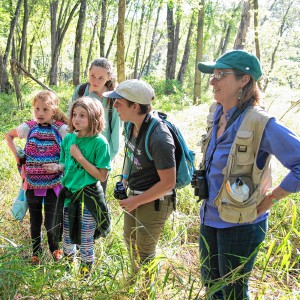 How a hurricane and a cardinal launched a UVM professor on a new career path
How a hurricane and a cardinal launched a UVM professor on a new career path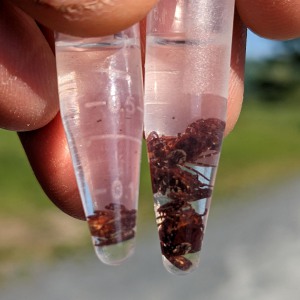 Out & About: Vermont Center for Ecostudies continues Backyard Tick Project
Out & About: Vermont Center for Ecostudies continues Backyard Tick Project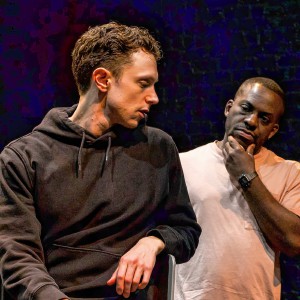 Art Notes: After losing primary venues, JAG Productions persists
Art Notes: After losing primary venues, JAG Productions persists 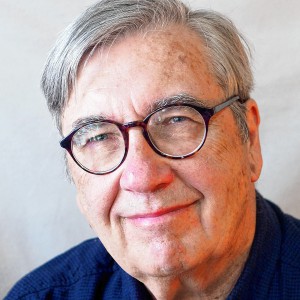 Over Easy: Marvels in the heavens, and in the yard
Over Easy: Marvels in the heavens, and in the yard 
